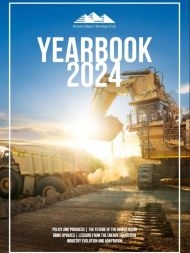How do Queensland’s mining closure regulations stack up on the social front?
Researchers Nick Bainton and Sarah Holcombe observed in 2018, “The socioeconomic and political impacts that arise during [mining] operations are nearly always present in a more acute form towards the end of the project lifecycle”. Since they published their critical review, much has happened in closure scholarship, governance and practice, including a growing acknowledgement of the need to address the social aspects of mine closure. What we mean by the social aspects of closure are the socio-economic, political, cultural and institutional considerations that emerge when mining activities end. Those most affected by mine closure usually include local communities, employees and their dependents, rightsholders, local governments, regional authorities, regulators, suppliers, service providers, small businesses and other interested stakeholders. The focus is on long-term social sustainability and the capability of impacted communities to transition beyond the life of active operations. The importance of early, ongoing, and long-term community engagement in closure planning is increasingly recognised as a means of maximising benefits and minimising adverse impacts of closure. Community-engaged closure planning creates opportunities to centre the needs and expertise of the people who will inherit the land that is left behind and opens up space for co-learning between mining companies and host communities. Furthermore, actively including Indigenous interests, priorities, and expertise in closure planning offers an opportunity to remedy past exclusion and adverse impacts. Despite this more nuanced understanding of the social aspects of mine closure, closure regulations in many jurisdictions continue to overlook the need for socioeconomic planning and clear objectives for post-mining social outcomes. This deficiency inhibits mitigation of the often-devastating socioeconomic effects of closure and the integration of community objectives for mine site transitions into planning processes. To test these observations empirically, we analysed mine closure regulatory frameworks in three jurisdictions — Queensland and the Northern Territory in Australia and Nunavik (Northern Québec) in Canada. The jurisdictions have broadly similar mining histories, structures of mineral governance, and legacies of colonial relations with Indigenous peoples.
Language: English
Publisher: Bowen Basin Mining Club
Region: Australia
Type: Article
CITATION
Worden, Sandy, Holcombe, Sarah, and Keeling, Arn (2024). How do Queensland’s mining closure regulations stack up on the social front?. Chermside, QLD Australia: Bowen Basin Minnig Club.

